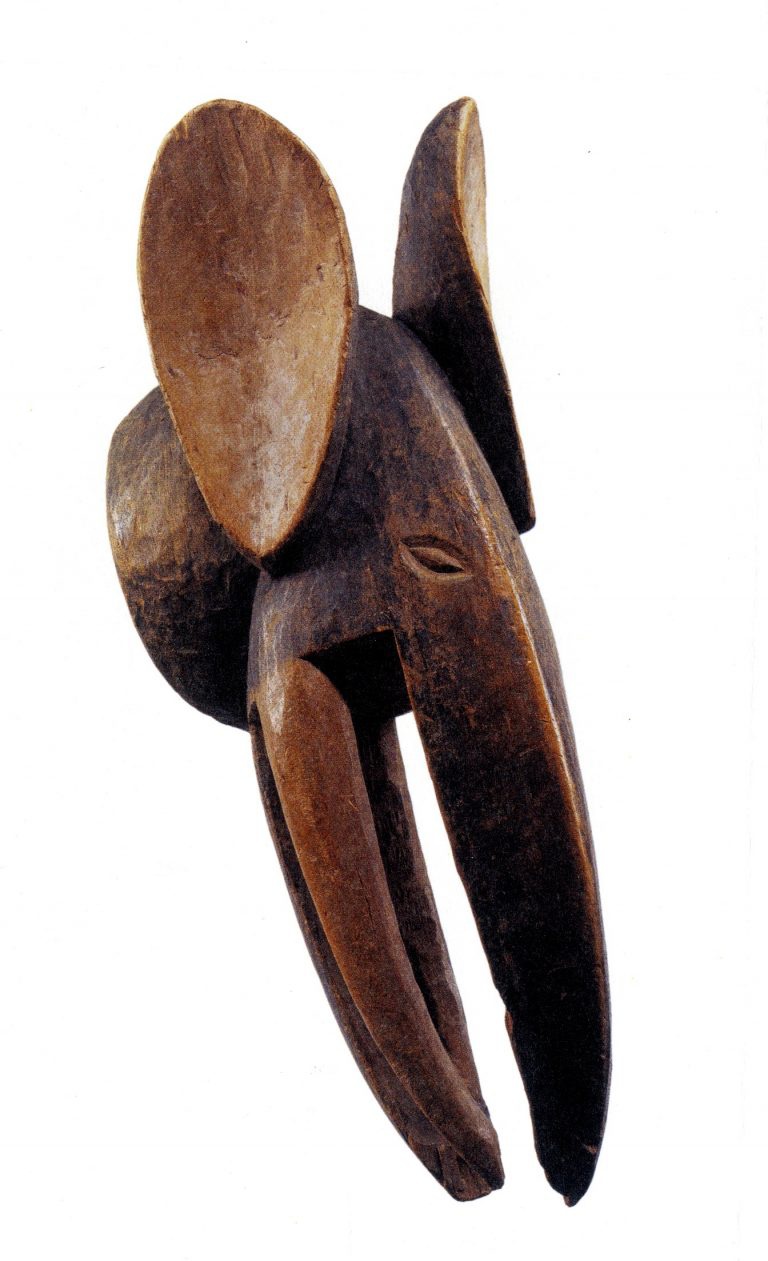
I’m happy to share my first Roman coin. Do not worry, this blog is still about African art and I did have a very good reason to track down an example of this ancient coin. Minted in Rome around AD 130-133, this imperial silver denarius in fact commemorates Roman Emperor Hadrian’s travels to Africa. As a trained historian, seeing the word ‘AFRICA’ on an almost 2,000 year old coin obviously blows my mind. On the backside of this coin, we see an elegant representation of the province Africa, which is personified as a woman reclining seductively. In the details of the composition we find emblems of the region: she wears an elephant headdress and holds a scorpion in her hand. At her feet we find a basket filled with an agricultural produce – the great agricultural estates of Africa did indeed generate enormous profits that sponsored many a senatorial career in imperial Rome.
Hadrian, who reigned from AD 117 to 138, was known as perennial traveler, spending more than half of his reign outside Italy. Perhaps the most well-known series of coins he issued is the so-called ‘Travel series’, various types struck bearing the names and personifications of the provinces visited by the emperor. However, as famous as they became, Hadrians travels are poorly documented, and scholars have had to reconstruct them through many different kinds of evidence. It is clear that his first trip occupied the years 121 to 125, that his second occurred from 128 to 132, and that his third and final voyage was staged from 134 to 136. Hadrian seems to have visited Africa proconsularis in 123 on his first voyage, and again in 128 on his second, so this coin was only minted after his return. Africa proconsularis was the region of North Africa directly below the length of the Italian peninsula. It was bordered in the east by Mauretania/Numidia and on the west by Cyrenaica, and it included the important centers of Leptis Magna and Carthage. Sub-Saharan Africa was yet to be explored.
Besides the mention of the word ‘Africa’, what is even more fascinating is that the province in fact is wearing an elephant headdress. We thus have one of the oldest depictions of the tradition of mask-wearing on the continent. Indeed, elephant headdresses can be found in many different African cultures – see Doran Ross’s book Elephant. The Animal and Its Ivory in African Culture” (Los Angeles, 1992) for an in-dept exploration of the subject. Below two examples of elephant headdresses from Cameroon.

 Bamileke elephant headdress, Cameroon. Collection High Museum of Art (#2011.1), acquired from Maureen Zarember – Tambaran Gallery.
Bamileke elephant headdress, Cameroon. Collection High Museum of Art (#2011.1), acquired from Maureen Zarember – Tambaran Gallery.
ps I recommend checking out Marguerite Yourcenar’s novel Memoirs of Hadrian, published in 1951, about the life of the emperor written from his own perspective – emulating the lost autobiography he presumably authored.